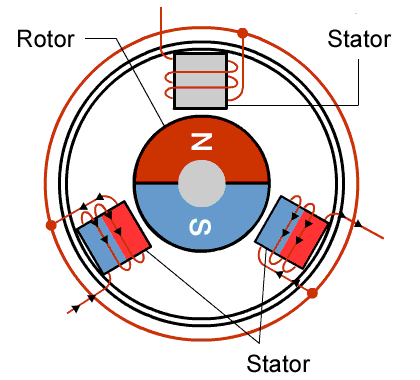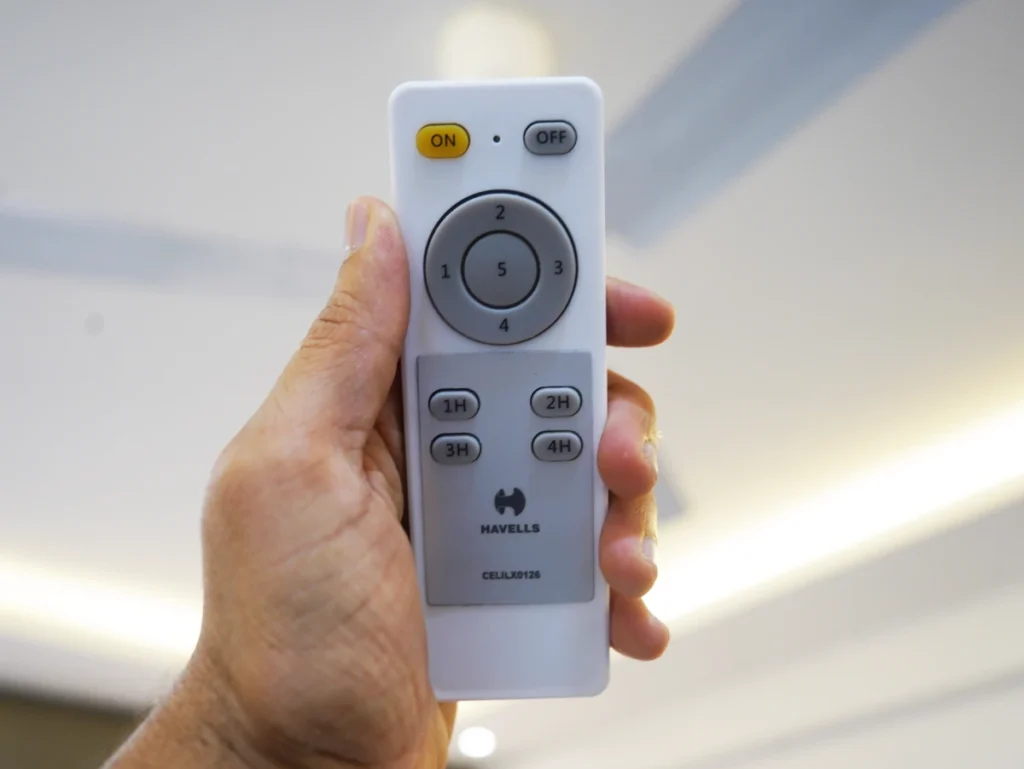The regulator’s function is to control the fan’s speed. The lower the ceiling fan speed, the lower the power consumption. Hence, the regulator serves to reduce power consumption. Capacitive-based regulators are ideal for induction motor ceiling fans. The regulator controls the voltage supply, allowing the fan to rotate at the desired RPM. However, BLDC fans work differently.

In a BLDC fan, a microcontroller in the hardware’s circuit detects the input power supply and sets the fan speed appropriately. In contrast, the capacitive regulator controls the input supply. Therefore, all regulators do not control the input power supply similarly.
Compared to regular ceiling fans, BLDC fans have stricter compliance requirements.
BLDC fans usually come with remote control options for speed control. Therefore, they come with warnings not to use external regulators. External regulators can cause the fan motor to draw more current, leading to overheating and motor failure. Besides, an external regulator causes the fan to make more noise because the remote control is calibrated to coordinate with the motor and provide the ideal power to reduce noise.
Another drawback of external regulators with remote-controlled fans is that they can cause the fan to spin at abnormal speeds, especially if the regulator does not match the motor properly. Hence, it can lead to safety hazards. Besides, using external regulators with remote-controlled fans can render the warranty void.
However, major BLDC fan manufacturers like Atomberg and Orient have recently released regulator fans. These fans have customized regulators different from those used for induction motor fans. The trade-off between the regular and customized regulators for BLDC fans is the Power Factor, which measures electricity wastage to our electricity grid.

Let us now answer the question, ‘Do BLDC fans require a regulator.’ It depends on the individual fan model. Generally, remote-controlled BLDC fans do not require a regulator because you can control the fan speed using the remote that coordinates with the microcontroller in the BLDC fan’s hardware. However, the top BLDC fan manufacturers have introduced regulator fans with customized operations.
Why are BLDC fans expensive?
Compared to regular ceiling fans, BLDC fans use advanced technologies, making them more expensive. We have discussed the complete working of the BLDC fan, which explains the different technologies used in manufacturing and functionality.
- The BLDC motor is more advanced than the regular induction motor. It has lower rotor inertial levels, leading to better dynamic characteristics.
- The BLDC fan has a microcontroller system that coordinates with the motor to optimize power consumption versus processing speed to ensure better performance.
- The other features include an electronic speed controller, temperature control, temperature sensors, remote control, and specialized software.
These additional features increase manufacturing costs, making the BLDC ceiling fan more expensive than the conventional ceiling fan.
Why do BLDC fans consume less power?

Conventional ceiling fans work on induction motors because they are inexpensive, easy to manufacture, and durable. However, the induction motors have a drawback because of the slip associated with single-phase motors where the rotors do not synchronize with the magnetic field that induces the rotor motion.
The friction loss associated with mechanical commutation is another significant drawback. In contrast, BLDC motors alleviate these issues because of the synchronization between the rotor and the rotating magnetic field produced by electronic commutation.
- Studies show that a 75W AC induction motor has an efficiency of 75%, whereas the 75W BLDC motor displays an efficiency of 90%.
- A Taiwanese study has shown that the energy consumption of a BLDC ceiling fan is around 50% of that of a regular ceiling fan with a split-phase induction motor.
- An Australian experimental study shows that the BLDC motor reduces energy consumption by a factor of 3 at low speeds and 2 at high speeds.
Other factors that help reduce power consumption include using active materials like lamination steel and copper, reduced stator-rotor air gap, and standard-grade aluminum for die-cast rotors.
Here is the comparison table that shows the difference in power consumption by BLDC fans and regular ceiling fans at different rotating speeds.
| Fan Speed Level | BLDC Fans – Power consumption (Watts) | Regular ceiling fans – Power Consumption (Watts) |
|---|---|---|
| 1 | 3.8 | 13 |
| 2 | 7.7 | 24 |
| 3 | 13.8 | 40 |
| 4 | 22.7 | 56 |
| 5 | 35.8 | 70 |
